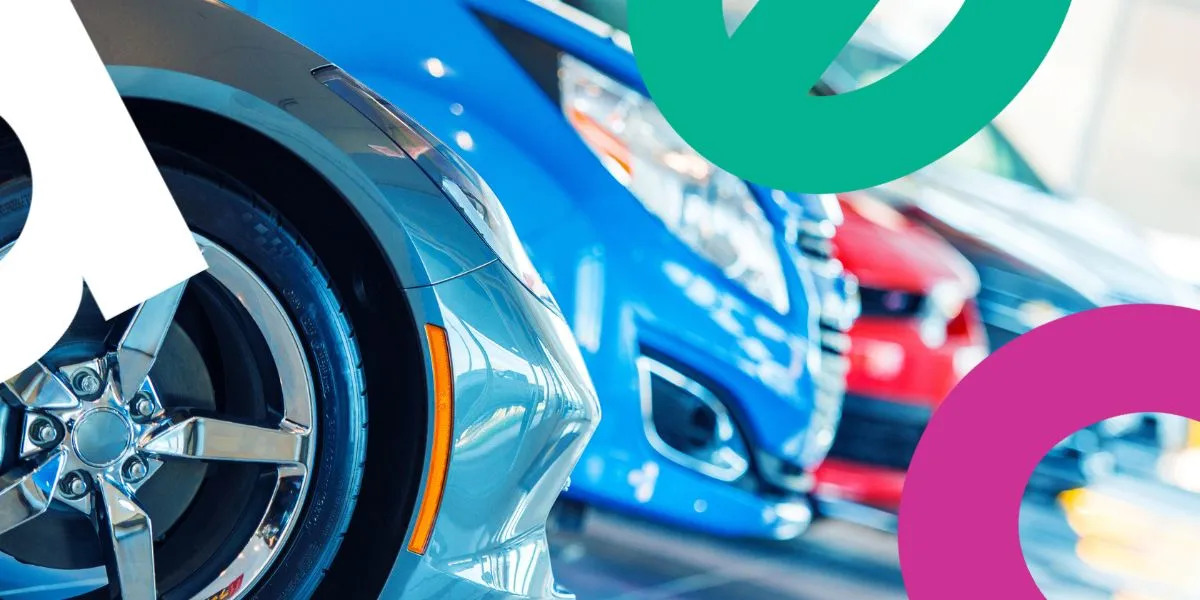Choosing between a car allowance and a company car is one of the most significant decisions employees face when negotiating their benefits package. Both options have distinct financial implications, particularly when it comes to tax and National Insurance contributions.
In this blog, we break down the real costs to help you make an informed decision.
Understanding the two options
Car allowance
A car allowance is a payment made by an employer and added to a salary, giving employees freedom to purchase or lease their own vehicle.
The employees typically receive a monthly allowance and receive the money regardless of whether they actually buy a car or not.
Company car benefit
The employer provides a vehicle for business and personal use. The car remains company property, and the employee pays income tax on the provision of the car based on its value and CO2 emissions.
Tax and National Insurance
There are two distinct differences in how the tax (and NIC) is calculated and paid by employees. In both instances, employers pay secondary NIC (Employers’ NIC), but when making a payment through payroll, Class 1 NIC is payable, and when providing a benefit in kind, Class 1A is payable.
Both Class 1 and Class 1A are paid at the same rates.
Car allowance taxation
A car allowance is treated as regular income, which means it is subject to;
- Income Tax at the employees’ marginal rate (20%, 40%, or 45%)
- Employees’ National Insurance (NI) at 8% (for earnings between £12,570 and £50,270) and 2% above £50270
- Employers’ National Insurance at 15%
Example calculation for a £6,000 annual car allowance
For a higher-rate taxpayer (40% tax bracket):
- Gross allowance: £6,000
- Income tax (40%): -£2,400
- Employee NI (2%): -£120
- Net amount received: £3,480
The effective take-home is just 58% of the allowance offered.
Company car benefit taxation
Company cars are taxed based on the Benefit-in-Kind (BIK) system, which considers:
- The car’s P11D value (list price including VAT and accessories)
- CO2 emissions rate (determines the percentage of P11D value taxable)
- The employees’ income tax rate
Example calculation for a £30,000 company car
For a petrol car with 125g/km CO2 emissions (31% BIK rate in 2025/26):
- P11D value: £30,000
- BIK percentage: 31%
- Taxable benefit: £9,300
- Income tax (40%): £3,720
- Total annual cost to employee: £3,720
Note: Class 1A employers’ NIC is due on the car provided to the employee based on the P11D value.
Scenario comparisons
Now that we have set out the income tax and NIC consequences and differences, let’s now look at the other associated costs with the employees owning or leasing a car against the costs for an employee for a company car.
Scenario 1: a traditional petrol car
Employee Profile: Higher-rate taxpayer (40%)
Option A: Car Allowance
- Annual allowance: £6,000
- Take-home after tax/NI: £3,480
- Car purchase cost: £25,000 (financed over 3 years)
- Monthly car payment: £694
- Annual payment: £8,328
- Insurance (estimated): £500/year
- Servicing & maintenance: £500/year
- Less business mileage claim, say 5,000 miles at 45p: £2,250
- Total annual cost: £7,078
- Net cost to employee: £3,598 (£7,078 – £3,480)
Option B: Company Car
P11D value: £30,000
- CO2: 125g/km (31% BIK)
- Tax cost: £3720/year
- Fuel for personal mileage: £1,200/year (estimated)
- Less business mileage claim, say 5,000 miles at 14p: £700
- Total annual cost: £4220
And the winner is … the car allowance saves £622 per year
There are assumptions made on business mileage and the fact that a fuel scale charge has not been applied. If a fuel scale charge is applied, the employer provides fuel for all travel, and the differential will be even greater.
Scenario 2: Electric Vehicle
Employee Profile: Higher-rate taxpayer (40%)
Option A: Car Allowance
- Annual allowance: £6,000
- Take-home after tax/NI: £3,480
- EV lease: £450/month (£5,400/year)
- Insurance: £600/year
- Servicing: £200/year
- Home charging: £400/year
- Total annual cost: £6,600
- Net cost to employee: £3,120 (£6,600 – £3,480)
Option B: Company EV
- P11D value: £45,000
- CO2: 0g/km (3% BIK for EVs in 2025/26)
- Taxable benefit: £1,350
- Tax cost (40%): £540/year
- Charging for personal mileage: £400/year
- Total annual cost: £940
And the winner is … the company EV saves £2,180 per year
The electric vehicle company car benefit is dramatically cheaper due to the ultra-low 2% BIK rate, compared to up to 37% for high-emission petrol/diesel vehicles. As fuel costs are minimal compared to petrol/diesel, we have left fuel out for comparative purposes
Additional financial considerations
Of course, there aren’t just the tax considerations that employees and employers need to consider; the following are additional considerations that must be made when assessing a car allowance against a company car.
Advantages of a car allowance
- Flexibility – choose any vehicle that suits the employee’s needs and budget
- No restrictions – drive unlimited personal miles without additional tax
- Build equity – if purchasing, the employee own the asset, but of course will suffer the depreciation associated with the purchase of a vehicle
- No age/condition requirements – drive whatever you can afford
- Keep the cash – even if the employee doesn’t need a car, for instance they already own a car, the allowance is theirs to do what they want with it
Advantages of a company car
- No capital outlay – no deposit or purchase costs.
- Predictable costs – fixed monthly tax liability
- Maintenance included – most company schemes cover servicing, repairs, and breakdown
- Insurance included – significant savings, especially for younger drivers
- Business mileage – fuel often provided for business travel
- Replacement vehicle – usually provided during repairs
- Tax efficiency – specifically for electric vehicles
The electric vehicle game-changer
The government’s push toward electric vehicles has created a significant tax advantage for company EVs.
With BIK rates of just 2% (rising gradually to 9% by 2029/30), the tax on a £50,000 electric company car is currently only £400/year for a higher-rate taxpayer.
Business mileage
When looking at the options between a car allowance and a company vehicle, it is also important to consider how business mileage works in each option.
With car allowance
You can claim Advisory Fuel Rates or 45p per mile (first 10,000 miles) for business travel in your personal vehicle. This provides additional tax-free income.
Example: 5,000 business miles
- Mileage claim: 5,000 × 45p = £2,250 tax-free
- This substantially improves the car allowance position
With a company car
Typically, fuel for business mileage is provided free, or you can claim the Advisory Fuel Rate. Personal fuel provided by the employer creates an additional fuel benefit charge (usually not worthwhile).
However, HMRC expects detailed mileage records to identify business mileage against private mileage. If no fuel scale charge is applied, HMRC demands that ALL private mileage is reimbursed to the employer; otherwise, the full fuel scale charge will apply
Key questions to ask yourself before making a decision
What are your annual business miles?
High mileage may favour company cars (no wear and tear on an employee’s private vehicle).
What’s your personal mileage?
Very high personal mileage is unrestricted with a car allowance.
What type of car do you want?
EVs heavily favour company car schemes; performance cars may favour allowances.
What’s your tax bracket?
Higher earners face steeper allowance taxes but the same BIK rates.
Do you have access to charging?
Essential for maximising EV company car benefits.
How long do you keep cars?
Long-term ownership may favour allowances; frequent upgrades favour company cars.
What’s your company’s fuel policy?
Free business fuel improves the company car proposition.
For most higher-rate taxpayers, particularly those choosing electric, it provides better value than a cash allowance. The tax efficiency of the BIK system, combined with included maintenance and insurance, typically outweighs the flexibility of an allowance.
However, if you drive high personal mileage, want a specific vehicle outside your company’s scheme, or value the flexibility to change vehicles frequently, a car allowance may be preferable despite the tax disadvantage.
The decision ultimately depends on your individual circumstances, vehicle preferences, and how you use your car. Always calculate both options based on your actual situation, considering your tax bracket, intended vehicle, business mileage, and personal preferences before making a decision.

